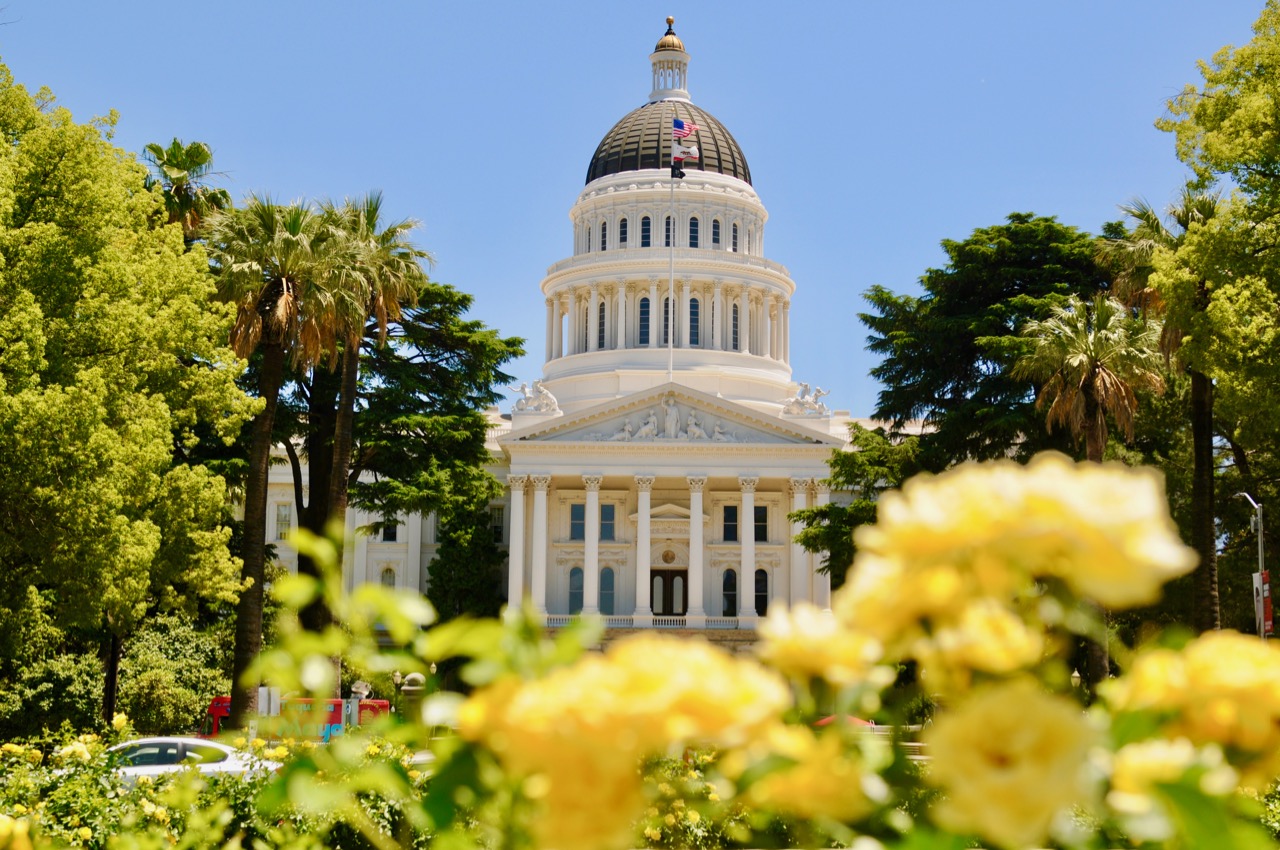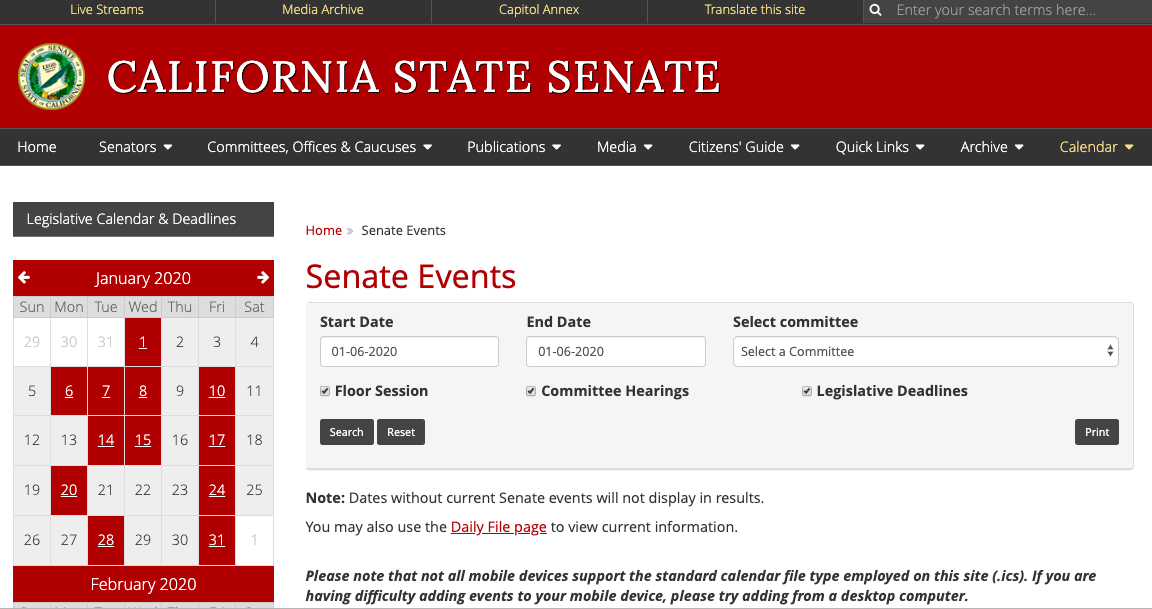
Globe Quiz on the California Legislative Process
The state Constitution authorizes the Legislature to divide the state into fish and game districts
By Chris Micheli, April 17, 2023 6:17 am
This quiz is to test your knowledge about the California legislative process.
- An Enrolled Bill Report (EBR) is prepared only by the Department of Finance when a bill reaches the Governor’s Desk.
- The California Constitution requires the Legislature to pass the state budget by midnight on June 30.
- The California Constitution requires a 55% vote for passage of the state budget.
- A bill with an urgency clause requires a two-thirds vote of the membership of each house of the Legislature for passage.
- Constitutional amendments require majority approval by the Legislature and signature by the Governor in order to be placed on the statewide ballot for a vote.
- A committee may pass, hold, or defeat a bill that the committee has before it.
- Engrossing and enrolling of bills are the same thing.
- A bill containing an urgency clause requires only one vote for passage.
- Senators need a second to move a bill, just like in the Assembly.
- Bill amendments need a majority vote of the membership of a committee (for committee amendments) or the house (for floor amendments) for adoption.
- All measures introduced in the first year of the session must pass out of their house of origin by January 31 of the second year.
- Legislators in either house can add on or change their votes on bills after the roll has been closed.
- An adjournment motion is always in order.
- A bill always needs to be read by its title on 3 days in each house.
- All introduced bills cannot be heard or acted on by committee or either house until the 31st day after the bill is introduced.
- Prop. 54 prohibits any bill from being passed or ultimately becoming a statute unless the bill with any amendments has been printed, distributed to the members, and published on the Internet, in its final form, for at least 72 hours or 3 days before the vote.
- A special session bill goes into effect on the 90th day after the special session adjourns.
- There are five types of bills that take effect immediately upon enactment.
- The Reenactment Rule requires all statutes to be reenacted in their original form every decade.
- The Governor has two options when a bill is presented to him or her: sign or veto.
- The state Constitution authorizes the Legislature to divide the state into fish and game districts.
- The four legislative leaders are required to report to their respective houses the goals and objectives of that house during that session and, at the close of session, report on the progress made.
How did you do? The following are the answers:
- False – the relevant state agencies and departments, as well as the Office of Legislative Counsel, in addition to the DOF, prepare EBRs for the Governor.
- False – it must be passed by midnight on June 15.
- False – the vote is a majority of each house.
- True – a 2/3 vote is required for both the urgency clause and the bill itself.
- False – the Governor does not act on a constitutional amendment, and they must be passed by a 2/3 vote of each house.
- True – these are the three options if a bill is heard by a committee.
- False – when a bill is amended, the printed form of the bill is proofread by staff to assure that the amendments are inserted properly. After being proofread, the bill is “correctly engrossed” and is deemed to be in proper form. Whenever a bill passes both houses of the Legislature, it is ordered enrolled. In enrollment, the bill is again proofread for accuracy and then delivered to the Governor.
- False – a vote on the urgency clause, requiring a two-thirds vote in each house, must precede a vote on the bill pursuant to Joint Rule 27. As a result, there are actually two votes taken on the floor for a bill containing an urgency clause, the first on the urgency clause and the second on the bill itself.
- False – in the Senate, to vote on a bill only requires an initial motion; however, in the Assembly, a motion and a second are required before a bill can be voted on by committee members.
- False – amendments to a measure can be made by a majority vote of those present and voting, rather than a majority of the committee or floor members.
- False – this is the general rule for bills, but Joint Rule 56 does not apply to constitutional amendments.
- False – the Assembly allows its Members to add or change votes after the vote has been announced, so long as the final vote is not impacted. The Senate does not allow this, except for the President pro Tempore and the Republican Leader, so long as the final outcome of the bill is not affected (pursuant to Senate Rule 44).
- False – although that is the case under Robert’s Rules of Order, in the California Legislature, an adjournment motion is not in order if bills are still “on call” (see, e.g., Senate Rule 42). Once the calls are lifted, then a motion to adjourn can be made.
- False – the house may dispense with this requirement by a 2/3 rollcall vote.
- False – this rule does not apply to special session bills or the budget bill.
- False – the requirement is 72 hours, not 3 days.
- False – a special session statute goes into effect on the 91st day after adjournment of the special session at which the bill was passed.
- False – there are four types: statutes calling elections, statutes providing for tax levies or appropriations for the usual current expenses of the State, and urgency statutes shall go into effect immediately upon their enactment.
- False – the Reenactment Rule requires a section of a statute that is being amended to be is re-enacted as amended.
- False – the Governor has three options: sign; veto; or allow the bill to become law without the Governor’s signature.
- True – Section 20(a) of Article IV provides for this.
- True – this requirement is found in Section 22 of Article IV.
Latest posts by Chris Micheli (see all)
- Commencing Civil Actions in California - July 29, 2025
- Minors Enlisting in the Armed Forces - July 28, 2025
- Remote Marriage Licenses in California - July 27, 2025








One thought on “Globe Quiz on the California Legislative Process”